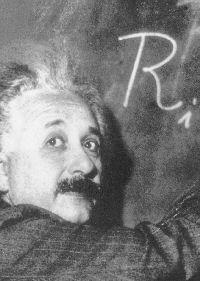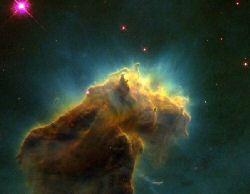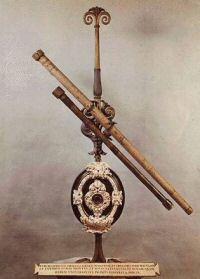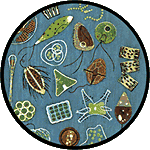The Scientific Method
 The scientific method: hypothesis, prediction, observation, validation, repeat. The scientific method is a recursive system of matching theory with observation.
The scientific method: hypothesis, prediction, observation, validation, repeat. The scientific method is a recursive system of matching theory with observation.A hypothesis is a tentatively held conjecture for the purposes of developing predictions of empirical observations. Workable scientific hypotheses have historically come from almost any source, including deep-thought or vast experience in a field of study, but also from a hunch, a dream (Kekulé), serendipity, an inspiration, from fanciful thought-experiments (Einstein), a lucky guess, or even while playing cards (Mendeleev). However any such scientific hypothesis must be reasonably consistent with known observations and make scientific predictions of future observations. Most hypotheses are naturally derived as extensions of existing theories.
In other words, the hypothesis is just one step in the scientific method. It must then be confirmed through observation. The more successful the hypothesis is at predicting various observations, the more confident we are in its validity. But all scientific findings are considered tentative and subject to revision upon new information.
——

Most of science is composed of non-intuitive conclusions. If the facts were obvious or just common sense, we wouldn't need the scientific method to make these determinations. The Earth is billions of years old. The Solar System is vast, but just a speck in the Milky Way Galaxy, which itself is just a speck in the Cosmos. Most "interesting" atoms were forged in the bellies of huge exploding stars called supernova.

Eppur si muove!
 Many aspects of science can be easily confirmed. We can repeat the experiments of Galileo, build a telescope and see the phases of Venus. Like Faraday, we can make an electric motor to demonstrate the relationship between electricity and magnetism.
Many aspects of science can be easily confirmed. We can repeat the experiments of Galileo, build a telescope and see the phases of Venus. Like Faraday, we can make an electric motor to demonstrate the relationship between electricity and magnetism.  We can make a microscope, just as Leeuwenhoek did, and rediscover tiny animalcules swimming in a single drop of water. We can see the spectrum of the Sun by using a prism, just as Newton did. Or we can take a hike, examine the geologic column, and verify the maps of geologists, such as those of William Smith — perhaps even finding a few common fossils.
We can make a microscope, just as Leeuwenhoek did, and rediscover tiny animalcules swimming in a single drop of water. We can see the spectrum of the Sun by using a prism, just as Newton did. Or we can take a hike, examine the geologic column, and verify the maps of geologists, such as those of William Smith — perhaps even finding a few common fossils. It is the repeatability of scientific observations that allows us to have confidence in our conclusions.
It is the repeatability of scientific observations that allows us to have confidence in our conclusions.Labels: Science
1 Comments:
Science often exhibits a subtle interplay between abduction, induction and deduction. Abduction is a common process of creating new generalizations, theories and hypotheses. Deduction takes a hypothesis to make a specific prediction. Then induction is used to fit the evidence to the hypothesis.
The scientific method is often considered primarily inductive as it is a recusive process of matching evidence to theory, but the process of abduction and deduction are also essential to any practical scientific progress by aiding in the development of hypotheses and the formulation of their empirical implications.
Post a Comment
Subscribe to Post Comments [Atom]
<< Home